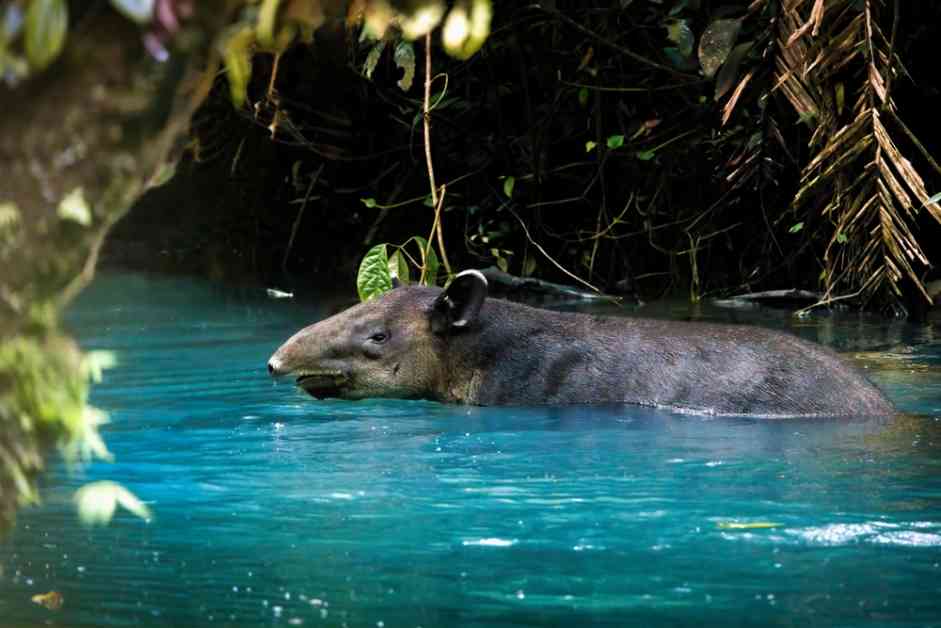Tapirs are fascinating ancient creatures that have roamed the Earth for tens of millions of years. They are large, herbivorous mammals belonging to the family Tapiridae, with four living species: Brazilian Tapir, Malayan Tapir, Baird’s Tapir, and Mountain Tapir. These animals have a unique prehensile snout that they use to grab leaves and fruit, as well as explore their environment and detect scents. Tapirs are well-adapted to their habitats, with robust bodies, short legs, and hooves that help them maintain balance on uneven terrain.
The largest tapir species is the Malayan tapir, which can grow up to 8 feet in length and weigh between 250 and 700 pounds. Tapirs primarily inhabit Central and South America, with the Malayan tapir being the exception, found in Southeast Asia. These creatures thrive in dense, tropical rainforests, grasslands, and swamps, and are excellent swimmers, often residing near water sources like rivers and lakes.
As herbivores, tapirs feed on leaves, twigs, fruits, and aquatic vegetation, playing a crucial role in seed dispersal and forest regeneration. Tapirs have a relatively low reproductive rate, with females giving birth to a single calf after a gestation period of about 13 months. The calves are born with distinct white stripes for camouflage in the forest.
Despite their appearance, tapirs are agile swimmers and often take to water to cool off, evade predators, or access aquatic plants. Unfortunately, three out of four tapir species are currently endangered due to habitat loss, poaching, and other human activities. Conservation efforts are essential to protect these ancient animals and their habitats. Many organizations worldwide are working on habitat conservation, anti-poaching measures, and breeding programs to preserve tapir populations.
Tapirs are crucial for maintaining the health of their ecosystems by dispersing seeds and fertilizing plants. Protecting tapirs also means conserving the forests and wetlands they inhabit, which are vital for the overall health of our planet. Preserving tapirs can have far-reaching benefits, ensuring these ancient creatures continue to thrive for generations to come.






